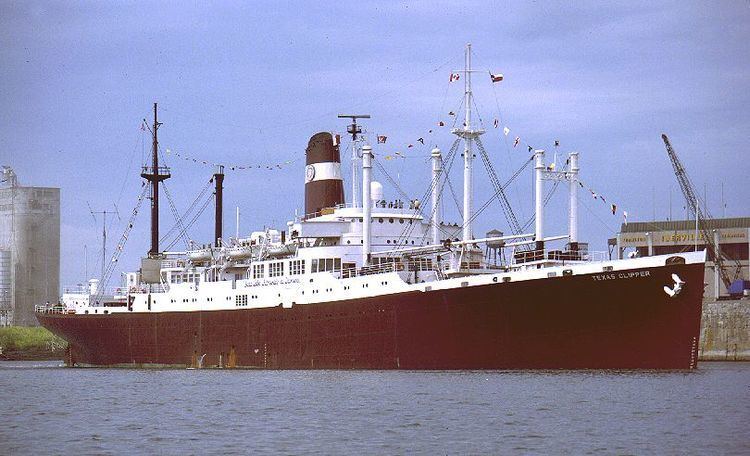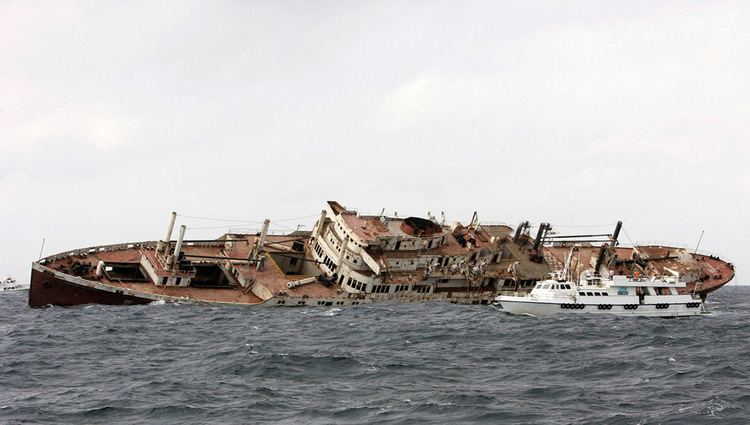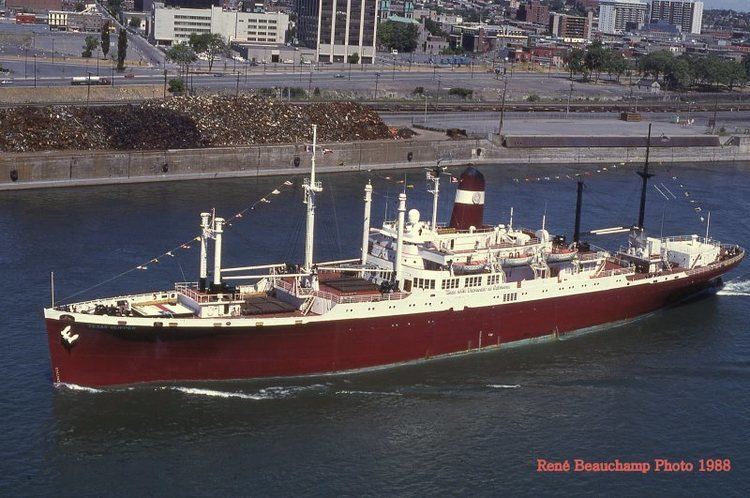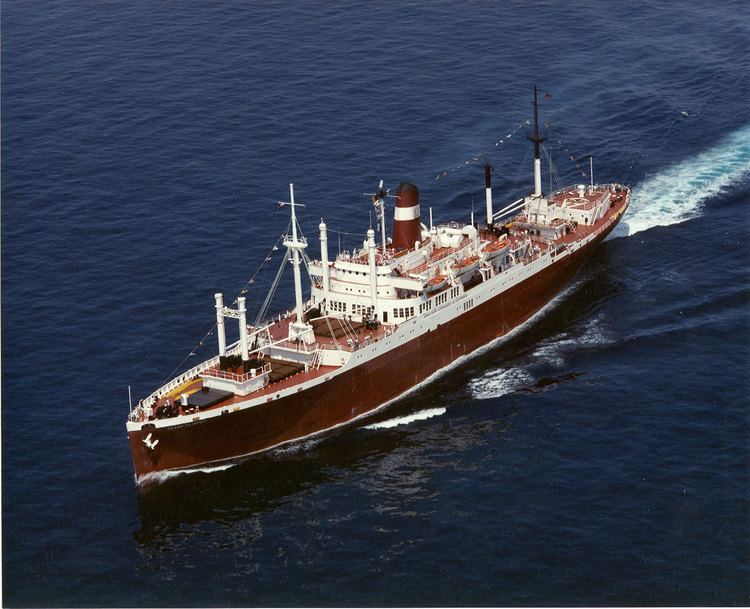Laid down 2 March 1944 Acquired 1965 Launched 12 September 1944 Displacement 7.23 million kg Beam 20 m | Namesake A clipper ship Christened USS Queens (APA-103) Construction started 2 March 1944 Length 144 m Draft 7.62 m | |
 | ||
Renamed Excambion, USTS Texas Clipper | ||
Texas clipper artificial reef texas parks and wildlife official
USTS Texas Clipper, 473 foot ship, served as a merchant marine training vessel with the Texas Maritime Academy at Texas A&M University at Galveston for 30 years beginning in 1965. Her name is reflective of clipper ships of old, both designed with a characteristic rounded stern.
Contents
- Texas clipper artificial reef texas parks and wildlife official
- Usts texas clipper creation of an artificial reef 17 november 2007
- Artificial reef
- References

Prior to her service as a training vessel, Texas Clipper had served in World War II as an attack transport vessel named USS Queens. Following the war, in 1948, Queens was converted into the trans-atlantic ocean-liner SS Excambion, a member of the quartet of ships referred to as "4 Aces" for American Export Lines. Excambion carried passengers and cargo on a regular sailing route from New York to various Mediterranean ports.

Following service as a training ship, the Texas Clipper I was moored at the Beaumont Reserve Fleet from 1996-2006. In 2006, Texas Clipper was transferred to the Texas Parks and Wildlife Department (TPWD) Artificial Reef Program to be turned into an artificial reef. This transfer allowed the ship to not be scrapped.

Usts texas clipper creation of an artificial reef 17 november 2007
Artificial reef
While being prepared to become an artificial reef, Texas Clipper was docked at the Port of Brownsville, Texas for cleaning of hazardous materials and modifications for wildlife and diver safety. The conversion, cleanup and sinking cost over 4 million dollars. The Texas Clipper was sunk on November 17, 2007, approximately 17 nautical miles (31 km) northeast of South Padre Island, TX. It was placed in 132 feet (40 m) of water. The top of the ship has reached depths as shallow as 50 feet (15 m).
The TPWD used careful consideration during the conversion of the ship into an artificial reef to preserve the ship's appearance. All masts and kingposts that were cut to meet Coast Guard clearance requirements being secured to the deck of the ship to add interest for divers and increase complexity for wildlife.
At 473 feet (144 m) in length, Texas Clipper was one of the largest vessels (in 2006) serving as an artificial reef off Texas. The SS V. A. Fogg, which sank during a mishap off Freeport, Texas, was 570 feet (174 m) in length. Twelve other World War II era ships are also part of the TPWD Artificial Reef Program.
Unfortunately, when it hit the ocean floor the vessel tipped onto its side, blocking access to its interior for fish and divers. Texas Parks and Wildlife Department spokesman Aaron Reed said it was unclear what caused the ship to tip. He said the state might ask the company that prepared the ship for its sinking to correct its position. The sinking of the ship has already cost the state about $4 million.
Before the demolition process began inside the ship, a large 11-panel mural by Saul Steinberg, created for the ship's conversion from attack transport USS Queens to cargo liner Excambion, was serendipitously discovered beneath wallpaper above the bar in its aft lounge. Saul Steinberg, a cartoonist and illustrator, well known for his many "New Yorker" magazine cover drawings, created the large murals for Texas Clipper and the other "4 Aces" ships. Texas Clipper was the subject of a Texas Parks and Wildlife Department video that provided an account of the mural's discovery prior to sinking the ship as an artificial reef off Brownsville, Texas. When asked to estimate the value of unusually large (22 ft.) mural, — according to Dale Shively, Artificial Reef Coordinator for Texas Parks and Wildlife — the Steinberg Foundation responded, "not millions of dollars, but it's probably at least six figures". The mural was removed for restoration and preservation.
